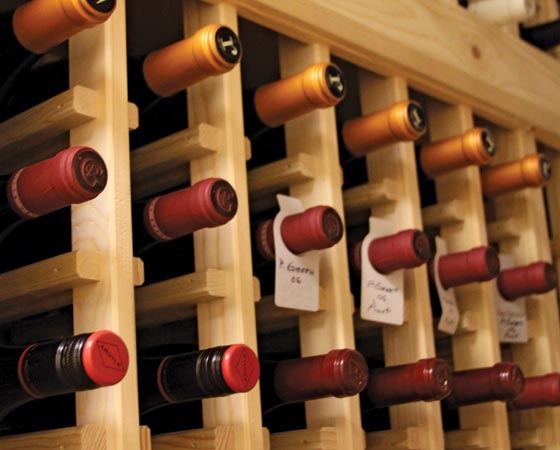Wine storage expert Patrick Gilroy explores a few of the perks that comes with renting your own personal wine locker

The majority of wine purchased in America is a current vintage that is consumed within one to two days after purchase, but for the occasions in life worth celebrating, a fine, aged wine can be the perfect complement.
Special occasions happen more often than you think. For example, just this past week some good friends bought their first house, a major holiday was upon us, and my wife and I celebrated six years of knowing one another. All three occasions found me reaching into my cellar for a special vintage, and the addition of fine wine to each occasion only served to heighten its significance.
Wine is a unique beverage that can improve in flavor and complexity with age, and one of the few where the aging process creates a substance of greater quality, greater scarcity and, thereby, greater value. Starting with a fine wine can only improve such an investment.
Recent reports indicate that wine bottles priced $20 or more saw a double digit jump in sales during the first few months of 2012 when compared with the same period last year. With sales of fine wine on the upswing, storage for special occasions becomes a necessary consideration.
A Wine “Savings Account”
Each of us has done it—sampled a fantastic bottle of fine wine and purchased a bottle for future consumption, but only one bottle. Then, when a special occasion arrives and it’s time to choose a wine suitable for celebrating, you see that single bottle and say to yourself, “Is this occasion special enough?” One can avoid this predicament by setting up what I like to call a wine “savings account.”
Here’s how to start: When tasting a wine you enjoy, particularly one that seems like it might benefit from more time in the bottle, don’t just buy one—buy two or three, and set them aside. Remember that not all wines improve with age, and those that do typically have a maximum age limit within which they are best enjoyed. Typically, fuller-bodied red wines that are higher in tannins and acidity will age well; white wines that have a high residual sugar are also good for aging. Ultimately, let your palate be your guide.
Keep these wines in a safe place, preferably dark, at a constant temperature (around 55 degrees), at approximately 65% relative humidity. Most importantly, however, keep them out of sight and away from temptation.
Sound Investment
Investing in wine storage will increase the likelihood that these bottles will remain unopened and aging happily toward their intended maturity. To help you decide if this is the right option for you, consider the cost of renting a locker: a 6-case wine locker filled with 72 bottles for a year would add about $2.50 to the cost of each bottle.
The more you store, the cheaper it is per bottle. A 98-case locker adds only $1.83 per bottle per year to the cost of the wine. If a $50 bottle of wine increases in value more than 4% per annum, then the cost of storage has paid for itself, not to mention proper storage conditions can add provenance to the wine that will aid significantly when establishing its value at 10 to 20 years, and beyond.
Finally, once you’ve built up a savings account with a few favored vintages, don’t be afraid to enjoy them once in a while. Now the question is not whether the occasion is “special enough,” but rather, “Whom do I want to share this bottle with me?”
Contributor Patrick Gilroy is an expert on wine storage and co-owner of Wine Storage Bellevue, an award-winning wine storage facility serving the Greater Seattle and Eastside areas in the Puget Sound.
